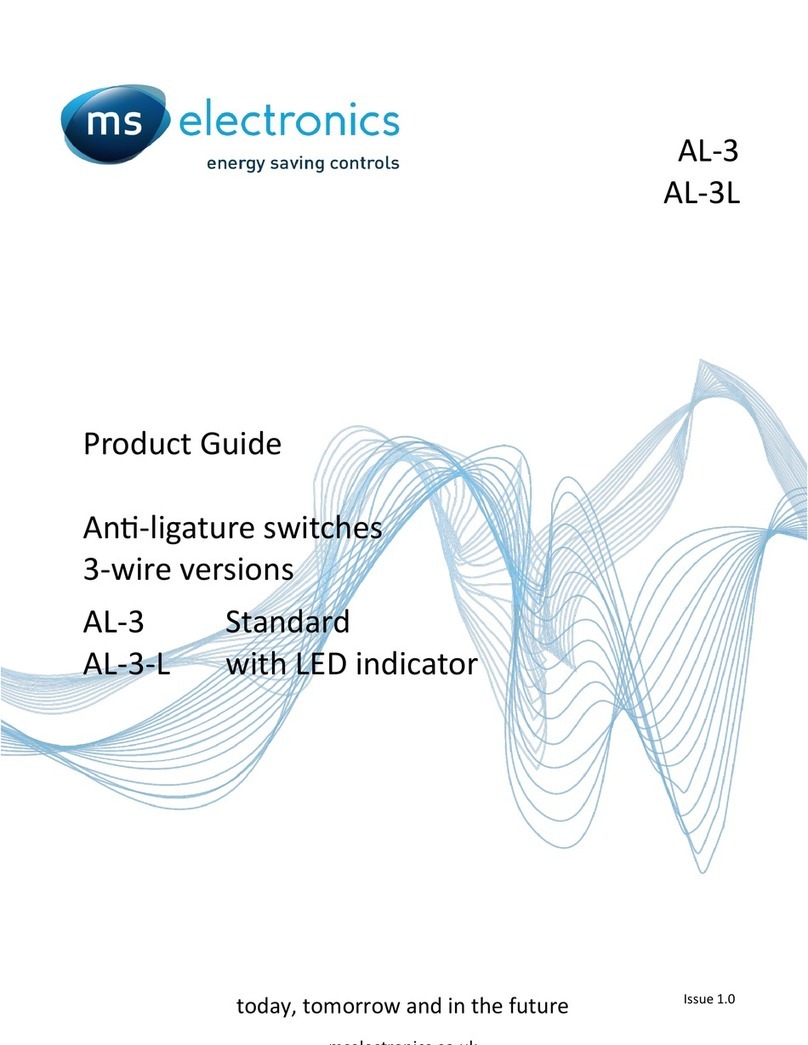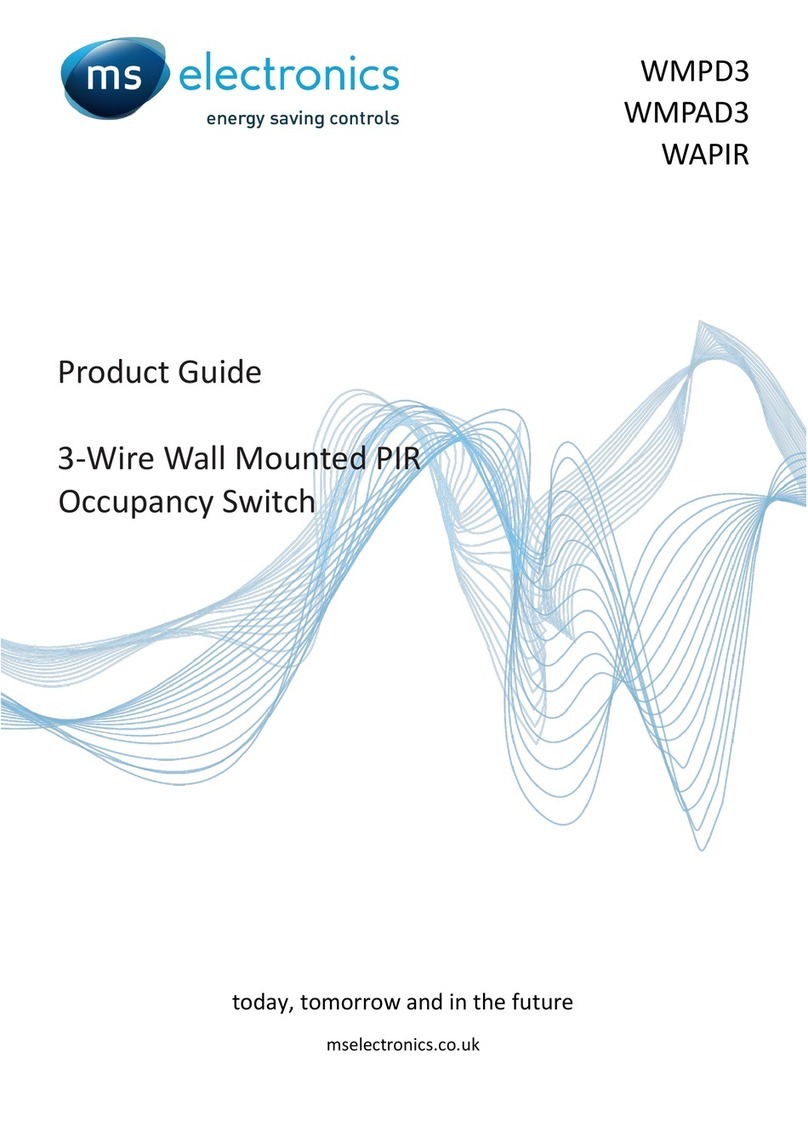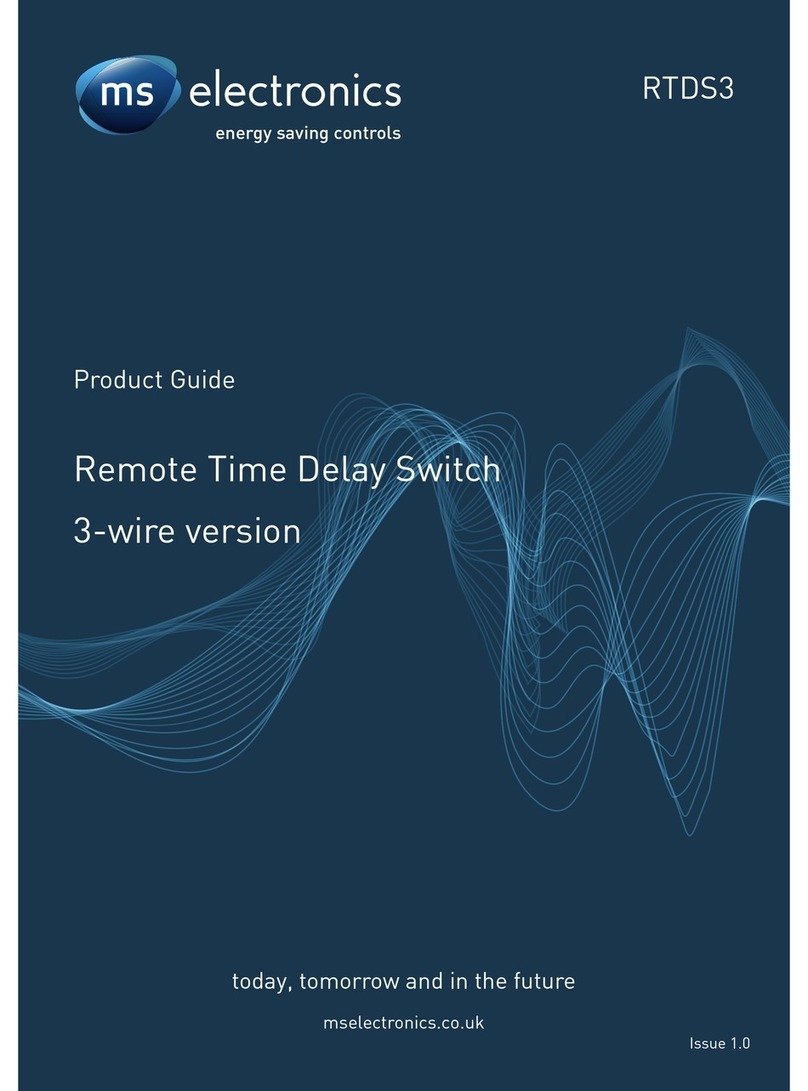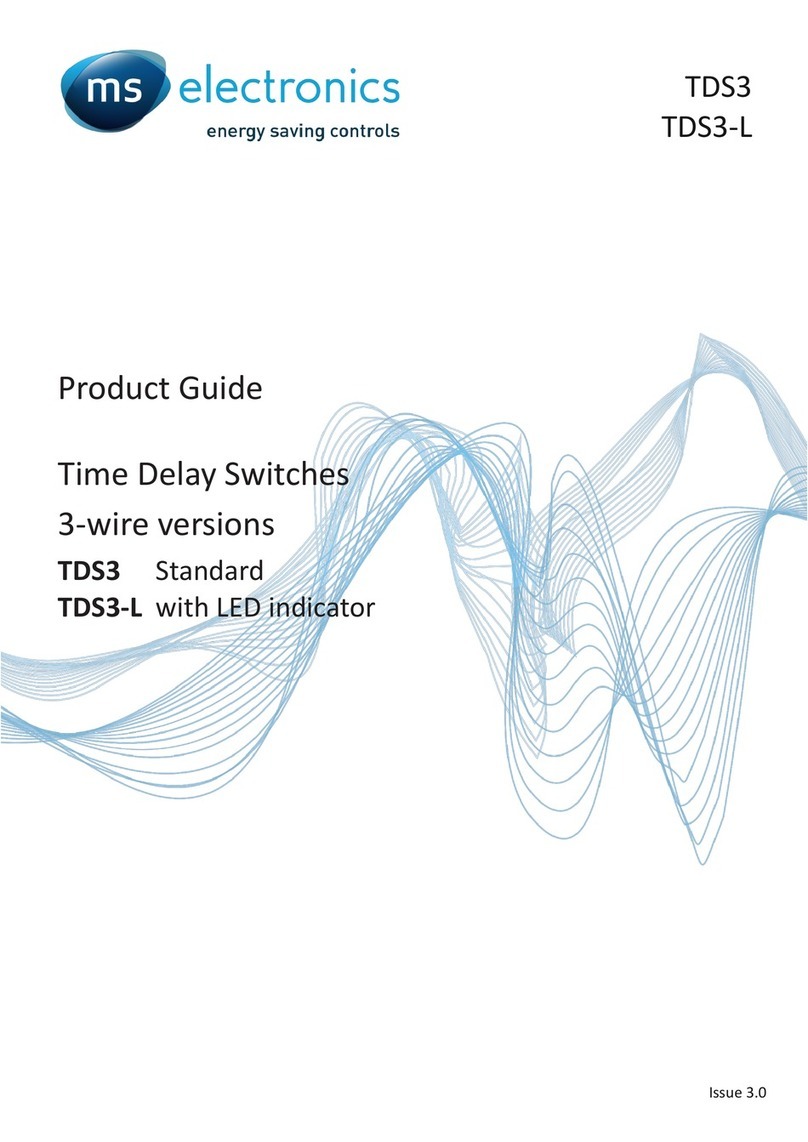mselectronics.co.uk 3
Electrical Requirements
Before aempng to install the unit, ensure that the intended load and wiring arrangement comply
with the following requirements. Figure 2 shows a typical wiring example.
•3-wire (live/neutral + volt-free switch) connecon: The unit requires a permanent live/neutral
connecon, and as such is not suitable for replacing an exisng light switch with no neutral
conductor at the switch locaon. A volt-free relay output is provided, which can be used to
switch a load on the same mains supply (by connecng across from L to LIVE IN, making LIVE
OUT a switched live), or to provide a contact closure to a separate load or control signal. There is
no minimum load requirement.
Also available: PCTDS2 (2-wire version) – Suitable for ‘inline’ connecon with the load to be
switched (no neutral required), such as to replace a standard light switch. A minimum load of
20W (per switch unit) applies; a load capacitor is required for smaller loads.
•Maximum load: The maximum load rang is 16A (4000W), however for high inrush loads (such
as most types of lighng), a lower limit applies: see Technical Specicaon.
Installaon
1. Prepare a single-gang paress or back box as necessary.
2. Rotate the Timeout thumbwheel (referring to the accompanying label) to set the period of me
for which the load should remain switched on aer the pull cord is operated.
3. Connect the wiring as shown in Figure 2 (or in any suitably appropriate form).
−Supply connecons (L, N): Use appropriate mains cable to power the unit. If the load is also
powered via this wiring, ensure the current rang is adequate. Otherwise (i.e. if the output is
independently powered), low-current cable may be used.
−Load connecons (LIVE IN, LIVE OUT): Use cable rated for the load current and voltage.
−Slave switch connecons (V+, R+, R-) if required: Low-current cable may be used but must
be rated for mains voltages. See Using Mulple Switches for wiring details and slave switch
opons.
4. Fix the unit into posion with the two screws and caps supplied.
Addional Guidelines
• The screw caps may be removed at a later date with the aid of an adhesive puy such as Blu-Tack.





























